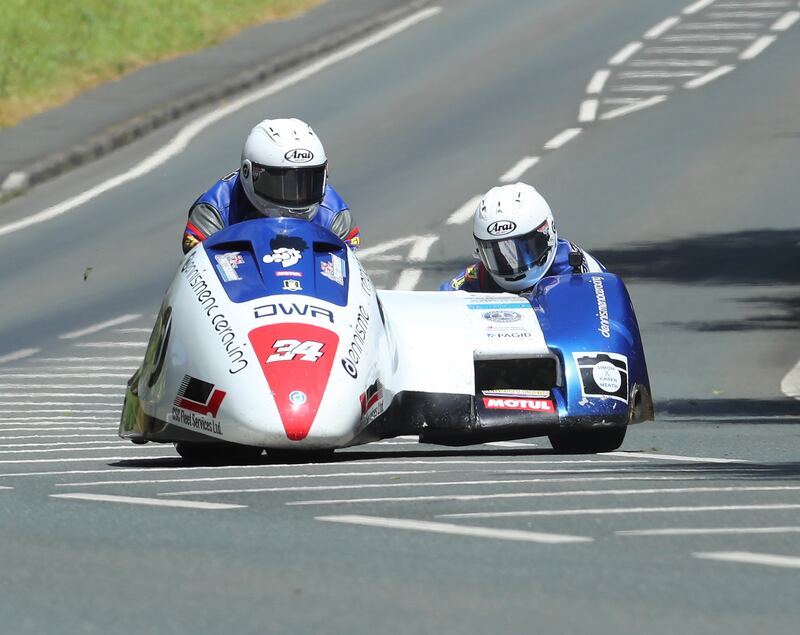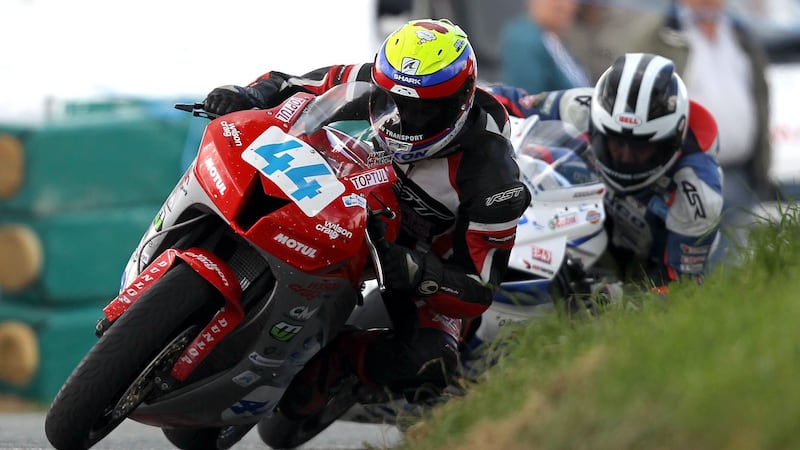In 1978 someone should really have got The Vatican on the phone because a miracle occurred on the Isle of Man. That year’s TT motorbike races saw the comeback of possibly the greatest racer of them all — Mike Hailwood. Long since retired from two-wheeled racing to try his hand at Formula One on four wheels, Mike the Bike came back to the island where he’d built his reputation. That reputation would either be burnished further, or would be tarnished by failure. There wasn’t much middle-ground.
In the end, there was no contest. Hailwood not only won the big race of the TT weekend, the Formula One TT, but he set a new lap record, eclipsing a record previously held by himself, of course. It was one of the great comebacks in sporting history, comparable to Ali vs Foreman, or Liverpool in injury time in Istanbul. For the sport of motorbike racing, it was possibly the most glorious moment of all time.
For all glories though there is always the flipside of tragedy. This year at the Isle of Man TT, no fewer than five competitors died. One was Davy Morgan from Co Down, and at his subsequent funeral kind words were spoken of another racer, Jack Oliver from Derry, who was killed in a racing crash in Kells, Co Meath, just a few days after the TT took place. Two of the victims on the Isle of Man were a father and son, Roger and Bradley Stockton, who were killed while sharing a racing bike and sidecar. Of all sports, racing motorbikes seems to extract the heaviest toll.
The inevitable calls for banning, or at least neutering, of the sport were raised. Should we, though? Or are we just destined to seek out thrills and danger in any form. It’s tempting to suggest that racing bikes is an obsession of youth, of people who have not yet learned about their own mortality, their own fragility. But then how do we explain the lengthy career of 50-year-old John McGuinness, who holds 23 wins in various classes at the TT. Even Hailwood was 38 when he made his great comeback. It’s not just about youth.
Merrion Road penthouses with cathedral ceilings, from €795,000
The 100 best Irish books of the 21st century: No 100 to No 51
Gerry Thornley: Jack Crowley’s patience rewarded as Ireland go in search of Rome revival against Italy
Sister Midnight review: An endlessly inventive marriage of perfectly pitched comedy and deranged ambience
“The opportunity to pit their skills against challenges is what draws them to the sport,” says Stephen Davison. Davison is a hugely experienced motor-racing photographer, who has been covering bike racing for more than 25 years, and has written a series of acclaimed books on the subject. “The dangers of mixing high speed with the ‘furniture’ — as the riders refer to the telegraph poles, garden walls, gate posts and buildings that line these closed public road courses — can never be fully eradicated,” Davison says.
[ Young motorcyclist who died at the Kells Road Races namedOpens in new window ]
[ Mounting deaths no deterrent at the Isle of Man TTOpens in new window ]
“Perhaps the only truest comparison lies with mountaineering. Split-second decisions in an extremely hostile environment can mean the difference between life and death. As it is for mountaineers, the ultimate defence of a road racer is that it will never happen to them, despite the mountain of evidence to the contrary.”
Road racing, where public roads are closed off to allow bikes to compete against nature and infrastructure as much as each other, is unique to Ireland and the Isle of Man, and dates back to legislation introduced to allow the 1903 Gordon Bennett car race to take place in Ireland. It’s what also allows closed-road car rallying to take place in Ireland, another sport that has seen more than its share of tragedy down the years.

Is it just too inherently dangerous to race on roads not designed for it? Susan Plunkett is clerk of the course for the Skerries 100, a motorbike race which will take place on the twisting country roads that loop behind the Co Dublin seaside town on July 2nd and 3rd. While the race will take place in the shadow of the TT tragedies, Plunkett says all the riders and the organisers are aware of the dangers and do their best to mitigate them.
“We’re not allowed to put a rider nor a bike on the road until we’ve had sign off from the governing body that the track is fit to race. Normally for a road race, if there are new riders in the field who haven’t seen the track before, we’ll send them out for untimed practice laps first so that they can get to know the track properly. This year, because we’ve been unable to hold the event thanks to Covid, we’re treating everyone as a newcomer, even the experienced riders, so everyone will get those safety laps,” Plunkett says.
“I’m a bit of a mammy to them, I always tell them before the start that they’re here to enjoy themselves and compete, and to be careful — they don’t have to win.”
Winning is ultimately what it’s all about though and Ireland has seen much success in motorbike racing. It riles racers that success in the sport is rarely reported, but tragedy is instantly leapt upon. “There’s no one stopping Irish riders at the end of the TT or in Skerries to stick a notepad or a microphone under their nose,” Andy Farrell says. Farrell is a successful motorbike racer, with podium finishes on the Isle of Man, and he will be helping out at the Skerries 100 this year. “They’ll always come calling when there’s been a tragedy though. It’s a close-knit community, road racing. Being in the paddock is the best place in the world, and sometimes the worst place in the world. When something bad happens, it’s honestly like losing a relative. We’re all that close.”
Farrell speaks of a family-like atmosphere, where riders will still lend rivals parts and spares to keep them running, far removed from the oft-rancorous world of Moto GP or even F1. “It’s still the ultimate test between man and machine and the feeling of riding a good lap around the TT or a course like Skerries… I almost can’t describe it. It’s incredible. The only thing I can compare it to is turning out for your county in the All-Ireland and scoring the winning goal. People start talking about the dangers of motorcycle racing when there’s a tragedy, but who ever talks about mountaineering in the same breath? Or cliff-diving? I wouldn’t go near that Red Bull cliff diving thing. Nor would I climb Mount Everest. I honestly don’t think I’d have the bottle.”
Farrell makes a salient point. Many of those who decry the dangers of the TT or any motorcycle road race will happily book a potentially risky skiing holiday. Meanwhile, the riders on the Tour de France on those steep Alpine descents are potentially even more vulnerable to serious injury than those on motorbikes, clad from head to toe in safety gear.
Farrell has recorded his own heart rate while lapping the fearsome mountain course on the TT and says it has been pegged at 190bpm for up to 20 minutes at a time, fuelled by pure adrenaline. He is part of the Loughshinny Motorcycle Club which, through the efforts of an army of volunteers, organises the Skerries event each year, as it has done for 76 years. “It’s something you love, because if you were paid for it you’d never do it. Loughshinny has spent an extra €40,000 this year, all raised through sponsorship, to improve the safety of the Skerries course. We don’t just throw out a few hay bales, we’re now using high-tech airbags and more to improve safety, and as a rider I know I can go around a track and if I see something that’s not right, the club will try to put it right.”

Ultimately, it comes down to choice. As both Plunkett and Farrell say, the riders are all well aware of the dangers and still choose to race for the sheer thrill of the sport.
“I’ve enjoyed the extraordinary privilege of witnessing some of the sport’s finest riders facing down incalculable risks to achieve their greatest goals. And I have also endured the pain of covering too many tragedies. You never, ever become used to that awful sense of loss,” says Davison. “These are the most open and generous people to be amongst, especially when it comes living life to the full. If you knew you could die tomorrow, wouldn’t you live every moment as if it was your last?”
Risk is, in any case, everywhere. Hailwood luxuriated in the glories of that ‘78 TT comeback before retiring once and for all, settling down to a happy family life. In 1981 he and his daughter Michelle were killed in a car crash when a truck driver made an illegal U-turn and ploughed into their car. They weren’t racing in the TT at the time, they had simply gone out for fish and chips.












